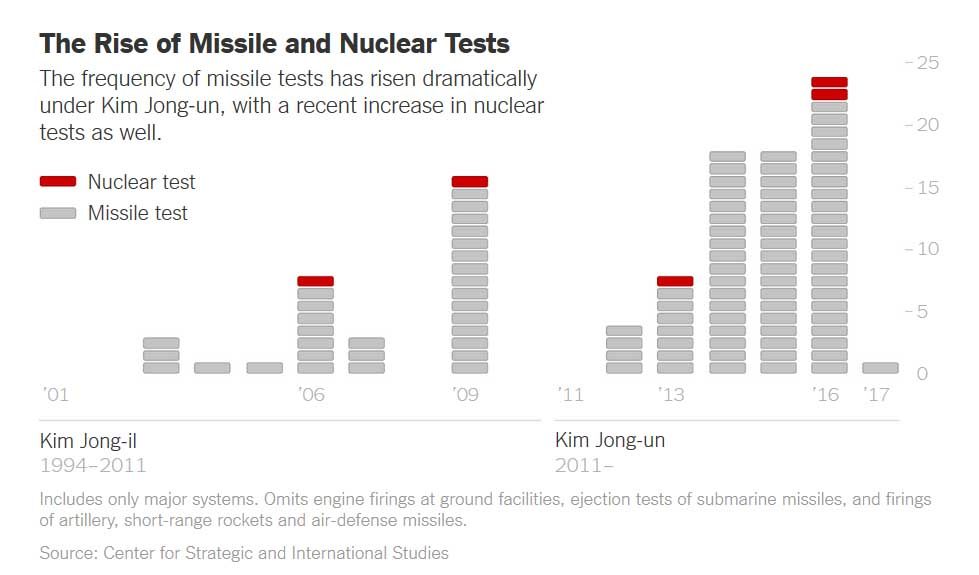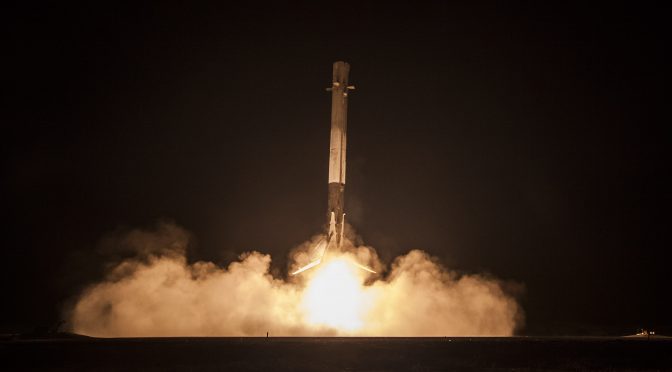NAFAC Week
By Madison Fox
In 2010, during a speech at the John F. Kennedy Space Center, President Obama ushered in a new era of American space exploration, marked by intense partnership with United Sate’s industry leaders.1 In the past, specifically during the Cold War Space Race of the 1960s, the United States’ achievements in space served as a bright beacon of the power of free markets, society, government, and innovation.2 Now, as tensions rise once again, and not only as space exploration but habitation become realistic possibilities, America will once again be called upon to lead. In this work, I hope to illustrate how the U.S. has done so thus far, and will continue to do so in the coming decades, with particular assistance from their most valuable resource, competitive innovation.
In the past decade, NASA’s budget has been on the chopping block. In fact, since 1993, NASA’s budget has never exceeded 1 percent of the federal budget; this is in stark comparison with 1966, when NASA received 4.41 percent of the entirety of the federal budget, it would seem the U.S. government no longer sees space exploration as a priority.3 Yet, many world-renowned scientists, businessmen, and even historians feel otherwise. The quest for space exploration has evolved to a quest for space habitation. The more humans learn about the universe we live in, the more aware we have become of our own precarious position in it. All of humanity’s achievements could come to a succinct end at the hand of any number of cosmological events, over which we have little to no control. While it may seem like science fiction or a doomsayer’s heedless cry, the possibilities are very real and must be considered in all their weight.
Threats to humanity are not solely man-made. While weapons of mass destruction are reaching far greater levels of effectiveness, possibly in space, Mother Nature maintains her own arsenal. The most obvious threat to humanity, and the threat that wiped out our predecessors on this planet, is an asteroid. The massive number of asteroids in our solar system mean that an asteroid strike is not just a possibility but highly probable; in fact, estimates put the likelihood of dying of an asteroid strike as high as 1 in 200,000, the same as dying in a passenger aircraft crash.4 As recently as 1908, a relatively small object, only 200-ft wide, landed in Siberia and brought with it the destructive power of 1,000 Hiroshima bombs, leveling 100 miles of forest.5 A mere 81 years later, a much larger asteroid passed within 400,000 miles of Earth, in a space Earth had occupied only 6 hours earlier. The effects of asteroids can be as “harmless” as a Hiroshima bomb or as harmful as Carl Sagan’s nuclear winter theory, and even extinction, as was the case with the dinosaurs.6 It is not a possibility we can dismiss as sensational, but one for which we must actively prepare. But even if asteroids aren’t convincing enough, other threats like the reversal of Earth’s magnetic field, giant solar flares, and rogue black holes, all have strong precedence in scientific research and would lead to cataclysmic results for our home planet.7
Our realization of the Earth’s precarious position in the cosmos has been the gun that set off the next great space race: the race to Mars. No longer in the realm of science fiction, billions of dollars have been invested by both private and public entities to assess the feasibility of the red planet as a harbor for humanity. The leaders of the effort are NASA and SpaceX, who have been working together over the past decade, a true testament to American economic and scientific principles.8 There has, in effect, been a divvying up of responsibilities between NASA and corporate space enterprises. Companies like SpaceX, Lockheed Martin, Boeing, and Orbital ATK, have taken on the physical logistics of space travel, after NASA retired its space shuttle program in 2011.9 Since then, it has shifted its focus on to the research required to achieve successful and sustained life beyond Earth, and it has been effective in doing so. As Elon Musk, the founder and head of SpaceX stated, his company’s mission is to build a modern day Union Pacific Railroad, but it is NASA’s mission to promote the feasibility of moving “West.”10
In December of 2008, NASA awarded two of the most forward thinking corporations in the world, Boeing and SpaceX, contracts for completing cargo shipments to the International Space Station.11 While the companies are perfecting their spacecraft, NASA has relied on Russia for transport to and from the American-funded and Russian-built International Space Station. Since 2006, the United States has been paying Russia for seats in it spaceship, Soyuz, the only spaceship on Earth able to transport humans to and from the ISS.12 In 2007, NASA was paying $21.8 million per seat for a ride in the Soyuz.13 In 2011, however, when NASA grounded its shuttles, prices skyrocketed, with the most recent estimates coming in at roughly $81 million for a 2018 seat.14 As tension builds, it is high time the United States took its mark in the next great space race.
World War II enlightened man to his own destructive power, and resulted in the Space Race of the 1960’, a quest for faster, cheaper, better missiles to dominate outside threats. In this present environment, with tensions between nations and ever increasing offensive capabilities, and Mother Nature in all her power and unpredictability, it is no longer a question of if the United Sates will compete in the next great space race, but how. Gone are the days of 250,000 miles, the distance to the moon; the next space race will measure around 250 million miles, the distance from our home planet to our neighbor, Mars.15 Only through sheer human ingenuity will man achieve such a goal, and it is the economic, scientific, and social climate of the United States that will allow us to break the ribbon across the next finish line of human exploration.
Madison Fox is a junior at The College of William & Mary. She has spent the past academic year studying abroad at Oxford University, resulting in a deep respect for both pubs and America. Upon graduation, she intends on pursuing a career in financial consulting and to eventually earn MBA.
Citations
Grush, Loren, The biggest lingering questions about SpaceX’s Mars colonization plans. The Verge, September 28, 2016. http://www.theverge.com/2016/9/28/13087110/spacex-elon-musk-mars-plan-habwwharton.upenn.edu/live/news/1619-the-implications-of-the-privatization-of-space#.
References
1. Barack Obama, ” REMARKS BY THE PRESIDENT ON SPACE EXPLORATION IN THE 21ST CENTURY” (speech, John F. Kennedy Space Center, Merritt Island, Florida, April 15, 2010), NASA.
2. Barack Obama, ” REMARKS BY THE PRESIDENT ON SPACE EXPLORATION IN THE 21ST CENTURY” (speech, John F. Kennedy Space Center, Merritt Island, Florida, April 15, 2010), NASA.
3. Shi, Lina. “The Implications of the Privatization of Space Exploration.” Penn Wharton, University of Pennsylvania, Public Policy Initiative.
4. Stephen, Petranek. “10 Ways the World Could End.” Filmed September 2002. TED video, 29:42. Posted September 2007.
5. Stephen, Petranek. “10 Ways the World Could End.” Filmed September 2002. TED video, 29:42. Posted September 2007.
6. Stephen, Petranek. “10 Ways the World Could End.” Filmed September 2002. TED video, 29:42. Posted September 2007.
7. Stephen, Petranek. “10 Ways the World Could End.” Filmed September 2002. TED video, 29:42. Posted September 2007.
8. Loren Grush, The biggest lingering questions about SpaceX’s Mars colonization plans. The Verge, September 28, 2016
9. Shi, Lina. “The Implications of the Privatization of Space Exploration.” Penn Wharton, University of Pennsylvania, Public Policy Initiative.
10. Loren Grush, The biggest lingering questions about SpaceX’s Mars colonization plans. The Verge, September 28, 2016
11. Shi, Lina. “The Implications of the Privatization of Space Exploration.” Penn Wharton, University of Pennsylvania, Public Policy Initiative.
12. Dave Mosher and Skye Gould, Introducing NASA is paying Russia more than $70 million to bring an astronaut home in this spaceship tonight (Business Insider, September 6, 2016)
13. Dave Mosher and Skye Gould, Introducing NASA is paying Russia more than $70 million to bring an astronaut home in this spaceship tonight (Business Insider, September 6, 2016)
14. Dave Mosher and Skye Gould, Introducing NASA is paying Russia more than $70 million to bring an astronaut home in this spaceship tonight (Business Insider, September 6, 2016)
15. Petranek, Stephen. “Your kids might live on Mars. Here’s how they’ll survive.” Filmed March 2015. TED video, 17:14.
Featured Image: SpaceX’s Falcon 9 Heavy first stage land landing. (Photo: SpaceX)





